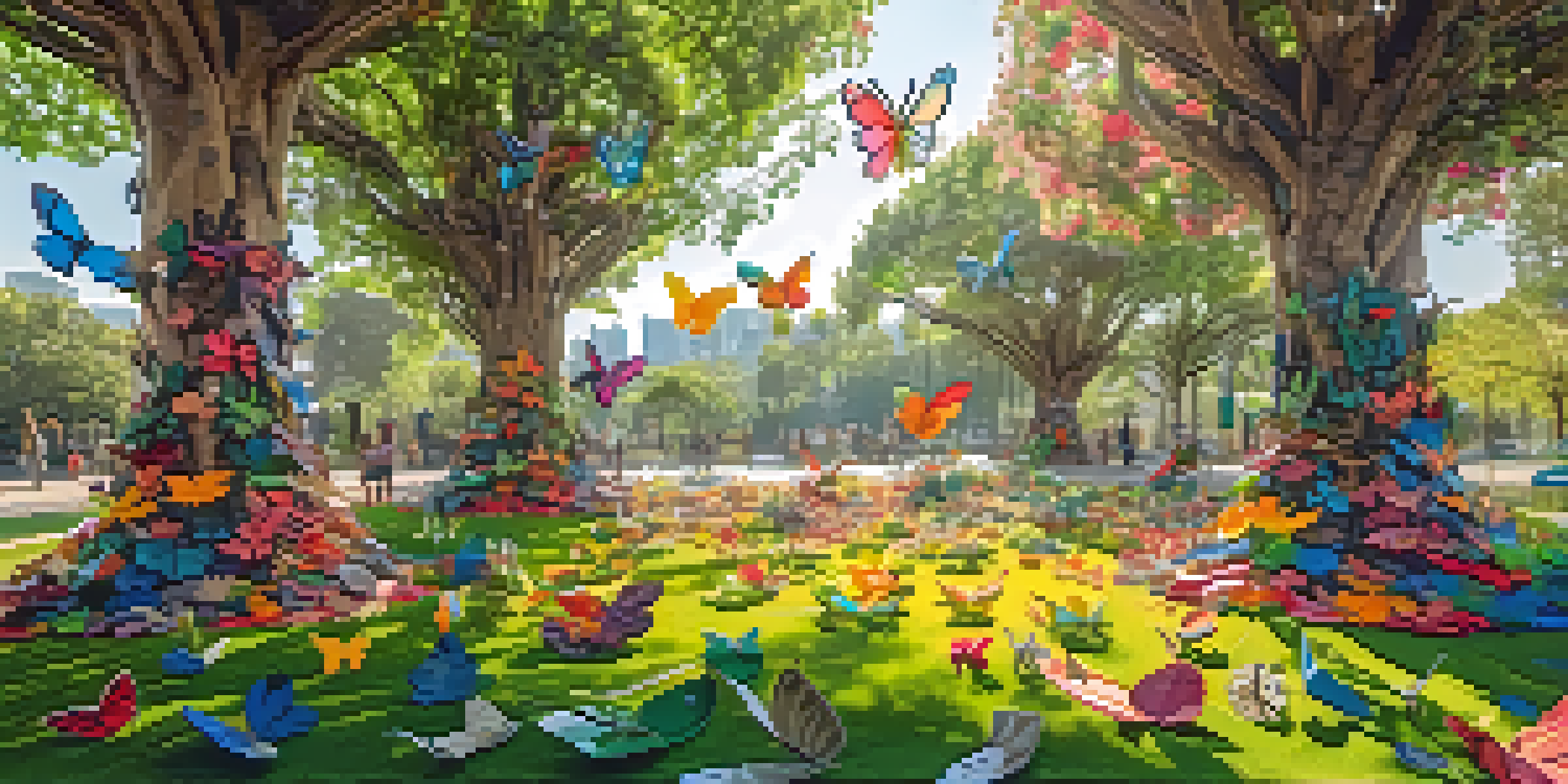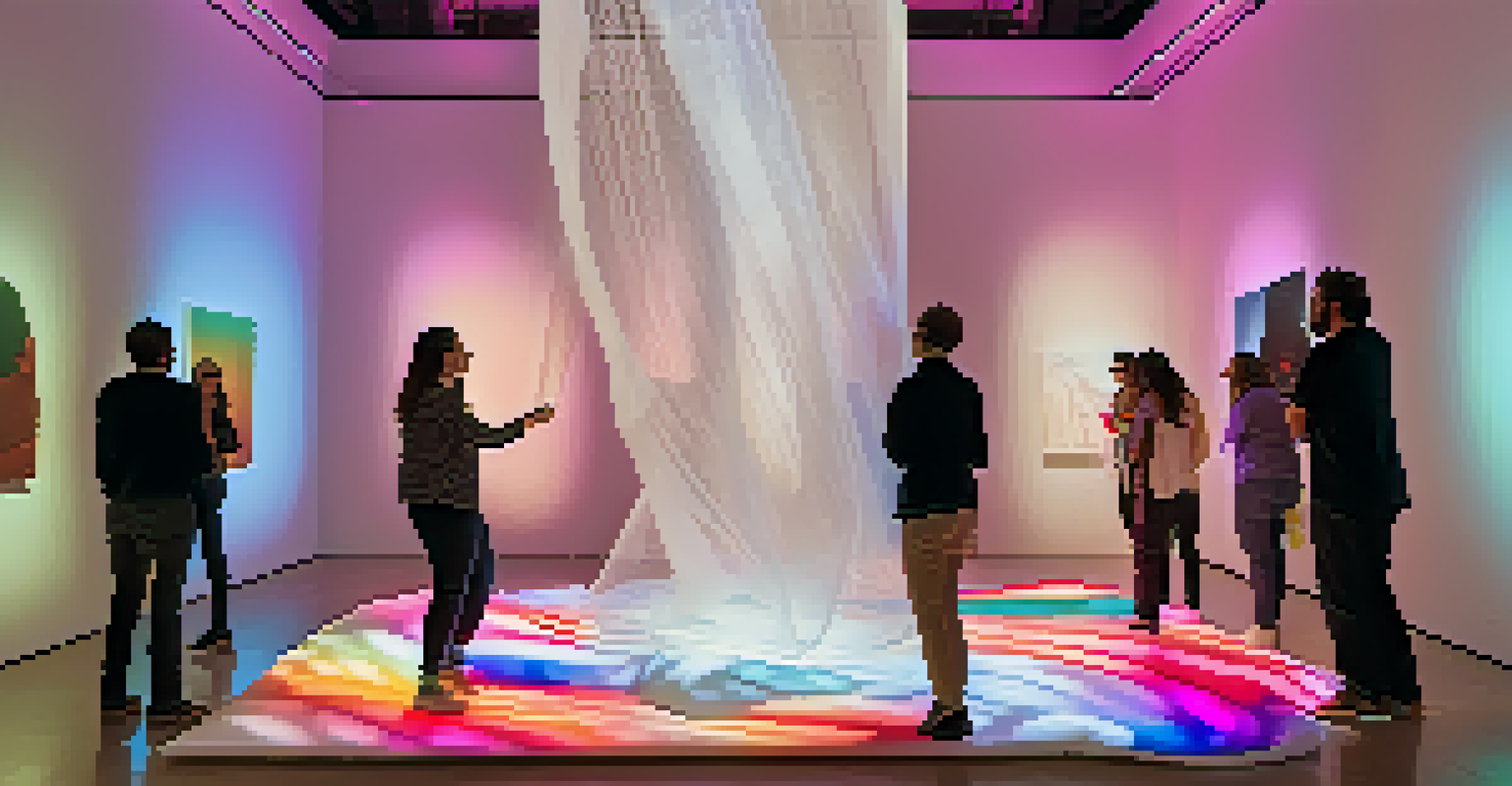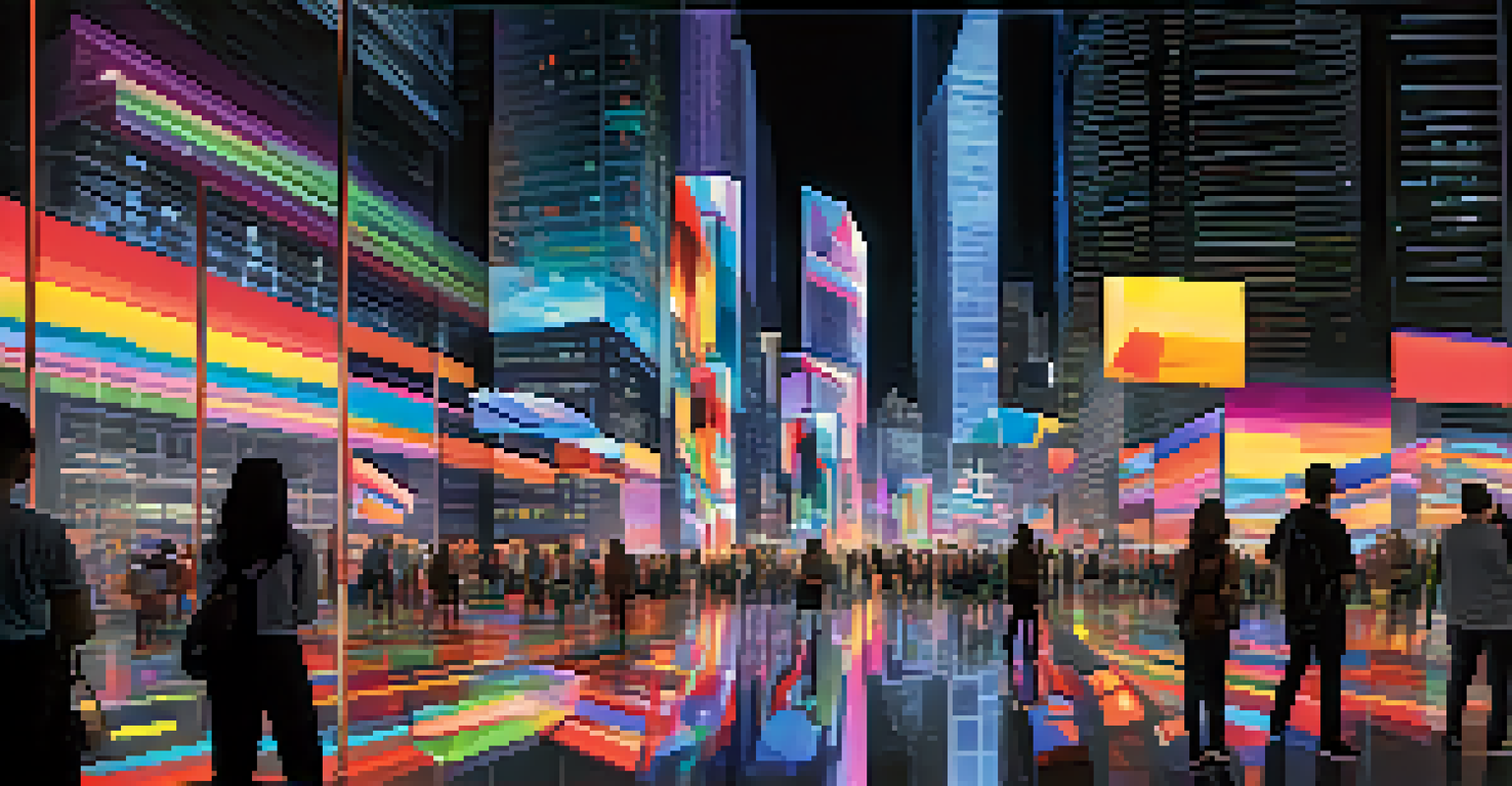Innovative Techniques in Contemporary Indian Art Installations

The Rise of Multimedia in Indian Art Installations
In recent years, multimedia has become a powerful tool in contemporary Indian art installations. Artists are blending video, sound, and interactive elements to create experiences that engage the audience on multiple levels. This approach not only enhances the visual appeal but also invites viewers to participate actively, making art more accessible and relatable.
Art is not freedom from discipline, but disciplined freedom.
For instance, installations like 'The River of Life' by artist Subodh Gupta use video projections and soundscapes to mimic the sounds of flowing water, immersing the audience in an evocative experience. Such techniques allow artists to convey complex narratives and emotions in a way that traditional mediums often cannot.
As technology continues to evolve, the possibilities for multimedia installations are expanding. Artists are increasingly experimenting with augmented reality and virtual reality, pushing boundaries and redefining how we perceive art in public spaces.
Nature as a Canvas: Eco-Friendly Installations
Eco-friendly art installations are gaining traction in India, reflecting a growing awareness of environmental issues. Artists are using sustainable materials and techniques to create thought-provoking pieces that highlight the delicate relationship between nature and humanity. This movement encourages both artists and viewers to consider their impact on the planet.

Take, for example, the installation 'The Forest of the Future' by artist Shilpa Gupta, which uses recycled materials to create a stunning visual representation of a thriving forest. This piece not only captivates the audience but also sparks conversations around conservation and sustainability, making art a vehicle for change.
Multimedia Enhances Art Engagement
Artists are incorporating multimedia elements like video and sound to create immersive experiences that engage audiences on multiple levels.
By prioritizing eco-friendly practices, contemporary artists are challenging the notion of art as a luxury and promoting it as a necessary dialogue about our world. This shift not only enhances the aesthetic value of installations but also aligns with global movements towards sustainability.
Interactive Installations: Engaging the Audience
Interactive installations are transforming how audiences engage with art. By inviting viewers to physically interact with the artwork, artists create a sense of connection and personal investment. This participatory approach blurs the lines between creator and observer, fostering a collaborative atmosphere.
The role of the artist is to make the revolution irresistible.
A notable example is 'The Tactile Experience' by artist Anish Kapoor, where visitors are encouraged to touch and manipulate the installation. Such experiences not only deepen the emotional impact but also democratize art, making it more approachable for those who might feel intimidated by traditional gallery settings.
The rise of interactive installations reflects a broader trend in contemporary art that values the viewer's role in the artistic process. This evolution not only enhances the enjoyment of art but also challenges artists to think creatively about how to engage their audience.
Cultural Narratives: Storytelling through Installations
Contemporary Indian art installations often serve as powerful storytelling mediums, weaving together personal and cultural narratives. Artists draw inspiration from their heritage, history, and societal issues, creating works that resonate on both individual and communal levels. This narrative approach enriches the viewer's experience and fosters deeper connections to the artwork.
For instance, installation artist Rina Banerjee uses her works to explore themes of migration and identity, reflecting the complexities of contemporary life in India. Her installations invite viewers to ponder their own stories and the stories of others, creating a shared space for reflection and dialogue.
Eco-Friendly Art Promotes Sustainability
Contemporary artists are using sustainable materials to create installations that raise awareness about environmental issues and encourage dialogue.
By incorporating storytelling into their installations, artists not only preserve cultural narratives but also challenge prevailing narratives, encouraging audiences to question and engage with their own perspectives.
Digital Art Installations: The New Frontier
As the digital age progresses, artists are increasingly turning to digital mediums for their installations. Digital art allows for endless possibilities, from dynamic visuals to immersive environments that can change in real-time. This innovative approach resonates particularly with younger audiences, who are accustomed to digital interaction in their daily lives.
A prominent example is 'Digital India' by artist Nikhil Chopra, which utilizes live streaming and social media to create a participatory experience. Viewers can influence the artwork from their devices, blurring the lines between creator and audience even further.
Digital installations not only enhance the aesthetic experience but also push the boundaries of traditional art forms. By embracing technology, artists are redefining what art can be and how it can be experienced in contemporary society.
Site-Specific Installations: Art in Context
Site-specific installations are tailored to their environments, creating a dialogue between the artwork and its location. This approach encourages artists to consider the history, culture, and architecture of a place, allowing the installation to resonate more deeply with its surroundings. The result is a unique interaction that transforms both the site and the viewer's experience.
For example, 'The Wall of Memories' by artist Bharti Kher is an installation created in an old textile mill, utilizing remnants of the past to engage with the history of the site. This connection fosters a sense of nostalgia and prompts viewers to reflect on their own memories.
Interactive Installations Foster Connection
Interactive art installations invite audience participation, transforming viewers into active participants and deepening their emotional connection to the artwork.
By anchoring their work in specific contexts, artists not only enhance the visual impact of their installations but also enrich the narrative, inviting viewers to engage with both the art and its surroundings in meaningful ways.
Performance Art: The Living Installation
Performance art is an innovative technique that merges installation and live action, creating a dynamic viewing experience. This form of art challenges traditional notions of static installations, as performers become integral to the artwork itself. Such interactions often evoke immediate emotional responses, drawing the audience into the narrative in real time.
An example of this is 'The Living Memory' by artist Atul Dodiya, where performers interact with various elements of the installation, bringing it to life. Audiences are not just passive observers; they become part of the unfolding story, which adds layers of meaning to the experience.

By incorporating performance into installations, contemporary artists invite viewers to engage with art in a more visceral way. This evolution challenges the boundaries of traditional art forms, offering a fresh perspective on what it means to experience and create art.